-
Problems with Aluminum Wiring
When it comes to home wiring, copper is the gold standard—or more appropriately, the “copper standard.” However, the price of copper has fluctuated over the years, whereas aluminum has remained rather low. For this reason, there are many buildings that have aluminum instead of copper for their wiring. Aluminum was thought to be an acceptable alternative in the 1960s and 70s, but has since been discovered to be subpar. If you have aluminum wiring in your home, consider having an electrician in San Jose to replace it for you.
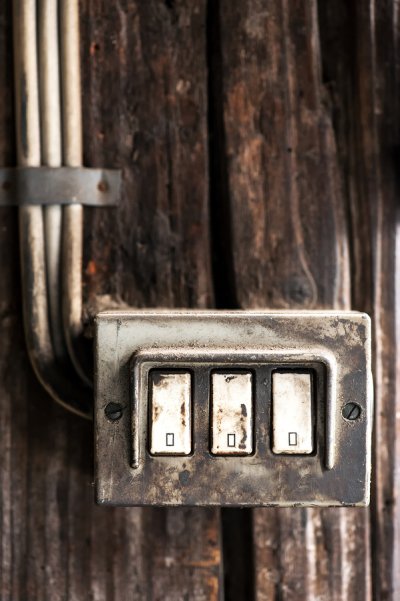
Less Effective Conductor
Though aluminum is less expensive than copper, its composition makes it a less effective conductor. For this reason, you need to use more aluminum in order to achieve the same amperage. Aluminum is also less ductile than copper, which means it is more likely to break down when drawn into thin wires and bent. Aluminum is more malleable than copper, and thus more sensitive to compression. The areas that get compressed have more electrical resistance, which is not what you want from a wire that’s supposed to conduct electricity.
Faster Deterioration
Copper is more resistant to corrosion than aluminum. If aluminum is exposed to moisture and certain kinds of metals, it will undergo something called “galvanic corrosion,” which is bad news for an electrical wire. Also, aluminum wire is more easily oxidized than its copper counterpart, and oxidization can seriously compromise important connections, which can in turn cause a fire hazard.
Potential for Loose Connections
Tight, secure connections are important for electrical functionality and safety. Unfortunately, aluminum wire behaves in such a way that sometimes makes it difficult to hold a connection. As mentioned above, oxidation is part of the problem. Another problem is that aluminum expands and contracts with temperature changes, and vibrates more than copper when an electrical current passes through it. Over time, these changes in size can cause aluminum to be separated from its connections, rendering it ineffective and unsafe.
-
What Is Knob-and-Tube Wiring?
As a homeowner, you likely take great pride in tackling home improvement projects yourself. However, there are some things that are worth calling a professional for: electrical wiring , for example. If your home was built before World War II, there’s a chance that it was wired with the knob-and-tube method. This wiring method is now obsolete, and should be replaced wherever it exists.
As the name suggests, knob-and-tube wiring is comprised of ceramic knobs and tubes. Unfortunately for the owners of older homes, knob-and-tube wiring is difficult to improve or retrofit, and is considered a fire hazard—especially when the wires are surrounded by building insulation. This is because the fiber materials in knob-and-tube wiring can become brittle over time. If your home has this type of wiring, it’s possible that your insurance company will not approve fire insurance. For the sake of your own safety, it’s important to have an electrician identify and remove knob-and-tube wiring and replace it with a safer method of wiring as soon as possible.

-
What to Know About Arc Fault Breakers
Since most of a typical home’s electrical system is out of sight, most homeowners do not understand how complex or sophisticated it truly is. For example, one big aspect of the modern home electrical system is the arc fault breaker, also known as an arc fault circuit interrupter. This piece of technology is vital for protecting your home from electrical fires.
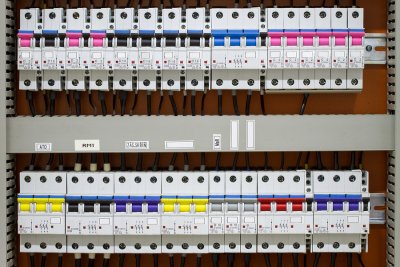
Importance
To understand the importance of arc fault breakers, it’s important to understand the concept of arc faults. Simply put, an arc fault is when an arc, or electrical discharge, flows through an unplanned path. As you can imagine, this could lead to some pretty dangerous circumstances—including an electrical fire. An arc fault breaker is designed to detect arc faults and protect the circuit, thereby reducing the risk of an electrical fire, of which there are more than 40,000 a year in the U.S.
Basic Function
The average arc fault breaker is very sophisticated, and uses advanced technology to detect various types of arcing. Normal arcing occurs all the time when electrical appliances are turned on—these require no special action from the arc fault breaker. When an arc fault occurs, however, the arc fault breaker instantly recognizes the fault and interrupts the circuit, thereby reducing the danger. By contrast, conventional circuit breakers are only equipped to respond to overloads and short circuits. Arc fault breakers are now required by law for circuits feeding into electrical outlets in most rooms.
Nuisance Tripping
Though arc fault breakers are vital for safety, there are times when they overreact. In other words, an arc fault breaker may interrupt a circuit even when an appliance is being used safely and properly. This is called “nuisance tripping.” This occurs most commonly with older electrical tools and appliances that have motors with brushes. Vacuums and power drills are two such appliances. If your breaker frequently engages in nuisance tripping, have an electrician take a look and address the problem. You should know that arc fault breakers are being improved on all the time.
-
How to Reset a GFCI Outlet
Most homeowners know very little about their electrical system. While you don’t need to be a professional electrician to be a responsible homeowner, it helps to know a few basic things. For example, it’s good to know that a GFCI outlet, or ground-fault circuit interrupter outlet, can be reset when it trips. This video provides a good introduction to GFCI outlets as well as a simple demonstration of how to reset a tripped outlet.
GFCI outlets are designed to automatically trip under potentially dangerous circumstances—for instance, when a blow dryer is dropped into a tub. When this occurs, the reset button (the top button) is in while the test button is out. To reset the outlet, simply press the reset button and power should be restored to the outlet. If it isn’t, you should call a San Jose electrician.
-
Tips for Choosing an Electrician
Your home is probably one of your favorite places on Earth. As such, you wouldn’t trust its care and maintenance with just anybody. However, there are certain maintenance and home improvement jobs that are too dangerous and important to attempt yourself. When it comes to electrical wiring, for example, you’re best off turning to a trusted San Jose electrician . For help finding the right electrician for your needs, consider the following tips.
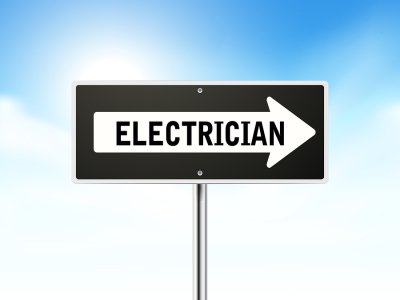
Determine What You Need Done
Before you start your search, you should determine exactly what you expect from your technician and jot down a few questions about the proposed project. Are you looking for a routine inspection, or do you have a more specific job in mind? Do you need an electrician to provide wiring for a new building, or do you need to rewire an existing structure? This is important because different electricians have different specialties.
Look at Qualifications
Once you’ve narrowed down your search somewhat, look at the remaining candidates’ credentials and qualifications. Make sure you choose an electrician that is fully licensed, insured, and bonded in the State of California. It’s also a good idea to check the license number of each electrical contractor, just to make sure it’s safe and legal for them to work on your project.
Check Out Past Reviews
Now’s the time to check out past reviews for the electrician you’re interested in hiring. If you see an electrician with a high rating on Yelp!, Google Reviews, and other review services, then you may have found your team. If an electrician has performed well for numerous past clients, then there’s a good chance that they’ll perform well for you, too.
Conduct a Brief Interview
Once you think you’ve found a suitable electrician, don’t be afraid to call them up. Ask whatever questions come to mind, discuss your proposed project, and get a feel for how the electrician conducts business. If you have a good feeling, and the credentials and reviews check out, odds are you’ve found your electrician.
-
Resetting Your Circuit Breaker
When a circuit breaker trips in your home, it’s usually a sign that you have been using too much electricity in one specific part of your house. Hair dryers, irons, and older appliances can all cause circuit breakers in your fuse box to trip. You can reset your circuit breaker without the help of an electrician serving San Jose , who can also investigate your problem further if your circuit breakers trip on a regular basis.
In order to reset your circuit breaker, all you need to do is locate your fuse box, find the circuit breaker that tripped, and switch it back on. Before you do, you should also shut off whatever appliances you were using prior to the power shutting off. Once you reset it, wait for about 30 seconds to make sure it stays on. Then, go and turn your appliance back on to see if the circuit breaker is delivering power again. You should be able to start using the electrical outlet tied to the circuit breaker without a problem. If for whatever reason your circuit breaker continues to trip, Delta Electric can send an electrical contractor to test it further.
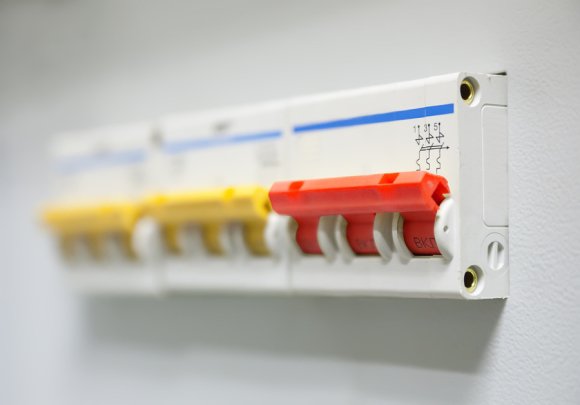
-
What to Expect from Your Electrician
If you are having an electrical problem inside of your home or business, you should not attempt to fix it yourself. Even if you are handy in other areas, you should leave the electrical work to a residential or commercial electrician . Electricians in San Jose can help you do everything from installing a new outlet in your home to completely rewiring the electrical wiring in your business. Read on to learn about the qualifications you should expect to from an electrician.

Valid License and Current Insurance
Before you begin working with a residential or commercial electrician for the first time, you should ask to see a license and proof of insurance. A license will show you that your electrician has obtained the proper education to do electrical work in your home or business. An insurance card will cover you and the electrician in the event of an accident inside of your home or business during an electrical job.
Extensive Knowledge and Experience
When you bring a certified electrician into your home, you want to feel confident in his or her ability to complete whatever job you need done. In order to do this, you need to make sure that you find a professional with knowledge and experience that’s tied directly to the work that you need finished. If you need an electrician to tackle a large job like upgrading your electrical panel or rewiring a portion of your house during a home renovation, check with the electrician about the specific experience that they have with these more complex tasks.
Good References
One of the final things you should do before hiring an electrician is ask for references. Your electrician should be more than happy to connect you with some of their past clients so that you can get a better sense of what you can expect if you hire them. By speaking with references and considering all other factors, you should have no problem picking out the best residential or commercial electrician for your job.
-
Electrical Maintenance Tips
When you encounter an electrical problem like a loose outlet in your home, you shouldn’t ignore it. Not maintaining your electrical system properly could lead to much larger electrical problems in the future. Watch this video to see why you should call a certified electrician near San Jose to help you maintain your electrical system at home.
While you should never attempt to fix an electrical problem without the assistance of a certified electrician, there are several things you can do on your own to maintain your system. You can check your electrical panel every so often to make sure that your circuit breakers aren’t warm. You can also keep an eye out for flickering lights as they could indicate an electrical issue. By being proactive about maintaining your electric, you can avoid the need for costly repairs and keep your electrical system in good working order.
-
What’s Tripping Your Circuit Breaker?
Is one of the circuit breakers in your fuse box tripping on a regular basis? If so, this is a sign that you may need to have an electrician come out to take a look at your electrical panel in San Jose . It’s also a sign that you may need to rethink the way you are using your electricity. In most cases, you can avoid tripping a circuit breaker simply by not running two appliances that require a lot of energy at the same time. Check out a few of the common household appliances that can cause circuit breakers to trip.
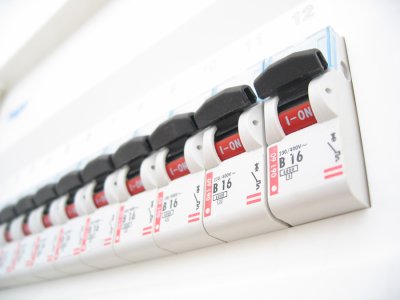
Hair Dryers
Most hair dryers are small, so you might not think that they would require much power. However, in order to deliver a steady stream of hot air, hair dryers use a tremendous amount of electricity . If possible, you should use a hair dryer in the bathroom where you have a ground fault circuit interrupter installed. It can cut off electricity for that specific outlet without causing a circuit breaker to trip.
Irons
Much like hair dryers, irons will put a serious strain on your fuse box because they heat up quickly and need a lot of electricity to do it. This is especially true when you turn an iron up to its highest setting. By turning down your iron’s heat, you can scale back on how much electricity it uses.
Fans
While running one fan in your home shouldn’t cause a circuit breaker to trip, you may run into issues if you attempt to run multiple fans at the same time. Most homeowners will run a fan all day long when it gets warm, and this will use up electricity throughout the day and increase the chances of a circuit breaker tripping.
Older Refrigerators
If you have a newer refrigerator, you probably won’t have to worry about it tripping one of your circuit breakers, but older models may present problems. You may need to hire a certified electrician to hook an old refrigerator up to its own circuit breaker to avoid electrical issues.
-
Electrical Services for Mobile Home Parks
Mobile home parks have unique electrical requirements. Whether you are designing a new mobile home park or are seeking to upgrade and improve your existing facilities, an electrician serving San Jose can help you choose the right electrical services for your property. At Delta Electric , our electricians are highly experienced in performing all of the special electrical services that are required for mobile home parks. For example, we can assist you with pedestal repair or replacement. In addition, we also offer main house panel upgrades, as well as full panel replacements. To help you ensure that your mobile home park is safe for all residents, we can also help you with hanging lights along streets and driveways. We provide substation circuit breakers, which will ensure that all of your residents are properly connected to the grid. Whether you are in need of minor electrical repairs or are planning a new circuit breaker installation, the experts at Delta Electric will be there to assist you.
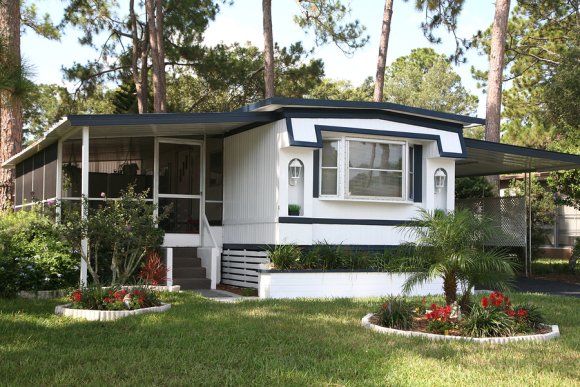
RECENT POSTS
categories
- Uncategorized
- Delta Electric
- Commercial Electrical
- Residential Electrical
- Electric Circuits
- Dedicated Circuits
- Circuit Breakers
- Electrical Panels
- Electrical Wiring
- Safety Inspections
- copper wires
- Electrician San Jose
- Trained Electricians
- Electrical Services San Jose
- Malfunctioning Electrical Outlets
- Circuit Breaker
- Grounding
- safety
- Flickering Lights
- Arc Fault Breakers
- electrical system
- Aluminum Wiring
- Circuit Interrupters
- House Surge Protection
- Zinsco Panel Warnings
- Wiring Conversion
- GFCI outlet
- professional electrician
- Knob-and-Tube Wiring
- modern home electrical system
- Fuses
Archives
2024
2023
2018
2017
- December (4)
- November (4)
- October (5)
- September (4)
- August (4)
- July (4)
- June (4)
- May (4)
- April (4)
- March (3)
- February (4)
- January (3)
2016
- December (3)
- November (4)
- October (4)
- September (4)
- August (4)
- July (4)
- June (4)
- May (4)
- April (4)
- March (4)
- February (4)
- January (4)
2015
- December (4)
- November (4)
- October (4)
- September (4)
- August (3)
- July (4)
- June (4)
- May (3)
- April (4)
- March (4)
- February (2)
2014
- December (3)
- November (4)
- October (4)
- September (6)
- August (2)
- July (3)
- May (2)
- April (1)
- March (2)
- February (1)
- January (1)

